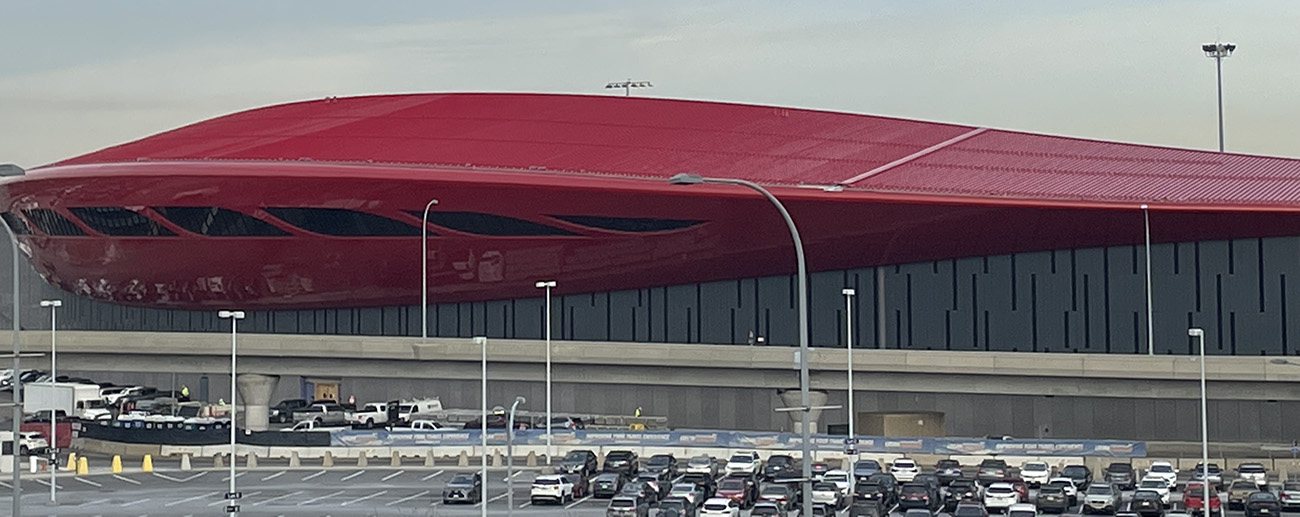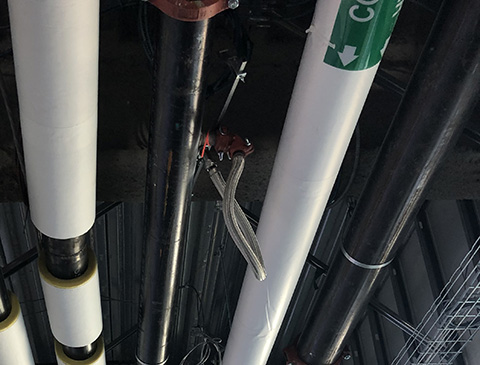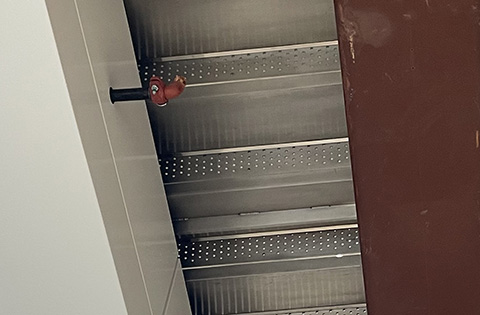Boston Logan International Airport – Terminal E Project

- Accommodating for Angular Deflection
- BIM Coordination
- Virtual Design & Construction
- Carbon Steel - Galvanized
- Compressed Construction Schedule
- Design Flexibility
- Ease of Installation
- Fire Suppression
- Improved Safety
- Minimized Footprint
- Reliability
- Retrofit
With international travel increasing in the area, Boston Logan International Airport invested $575 million into renovating and expanding its international terminal to accommodate higher capacity and upgrade the passenger experience at the airport. The Terminal E project included upgrading the terminal’s existing infrastructure and building a 320,000-square-foot addition to house four new gates.
Rustic Fire Protection was tasked with designing the fire protection system at Terminal E. Their team navigated significant challenges throughout the project as they worked to preserve the terminal’s unique architectural vision — including a curving structure and cloud ceilings — while designing the most effective sprinkler system. To keep the complex project on schedule, Rustic’s team needed solutions that would help them nimbly adapt to design changes and streamline coordination with other trades on the job site. Rustic partnered with Victaulic to navigate the project’s challenges, leveraging its grooved pipe-joining and fire protection technology to streamline design and construction in a one-of-a-kind building.
The team decided that routing pipes to follow the building’s shape with a traditional hard pipe solution, which required additional materials and space to change pipe directions, was not efficient or economic in the limited overhead space. “There was no room for error,” said Ross Barton, the fire sprinkler system designer at Rustic Fire Protection. “The heads needed to be centered and slotted between different ceiling aspects while still meeting code requirements. Trying to hard-pipe those into exact locations on schedule would have been borderline impossible.”
Instead, Rustic’s team opted to use Victaulic flexible couplings to install the sprinkler main line throughout the gently curving structure. Victaulic’s flexible couplings provided the necessary angular deflection on long runs of pipe to create a continuous main line with fewer construction materials and a significantly smaller footprint.
Terminal E features sloped cloud ceilings that discreetly conceal overhead mechanical, electrical and plumbing (MEP) systems. This ceiling type has varying slopes and elevations that often make sprinkler system installations more complex by creating ceiling pockets that impede adequate spray pattern coverage, potentially leading to trapped water points and challenges pitching main and distribution piping. Rustic used Victaulic’s braided hoses and flexible dry sprinklers to address these design challenges and streamline installation. The dry sprinkler solution eradicated trapped water points while the flexible hose enabled Rustic’s team to easily maneuver sprinklers around other MEP trades and into their correct outlet locations to meet coverage requirements. The technology mitigated risk of potentially time-consuming rework on a project with approximately 8,000 sprinkler heads.
A critical fire sprinkler zone is located by an exterior roof overhang that faces the terminal’s jet bridges. It was originally designed as a conditioned space, but when a wall removal rendered it unconditioned, Rustic needed a new solution to address pipe freeze from Boston’s frigid winters and proximity to jet blasts. Rustic sought a new technology allowance from NFPA 13 Section 1.7 to utilize Victaulic’s flexible dry sprinklers to address the challenge posed by the unconditioned environment.
By working together, Victaulic and Rustic found innovative, flexible and effective solutions to preserve the architect’s unique vision for Terminal E while meeting life safety requirements. Terminal E was completed successfully and opened to travelers in 2023, giving them an enhanced airport experience in a terminal unlike any other in the world.
Publications: NFPA Journal



